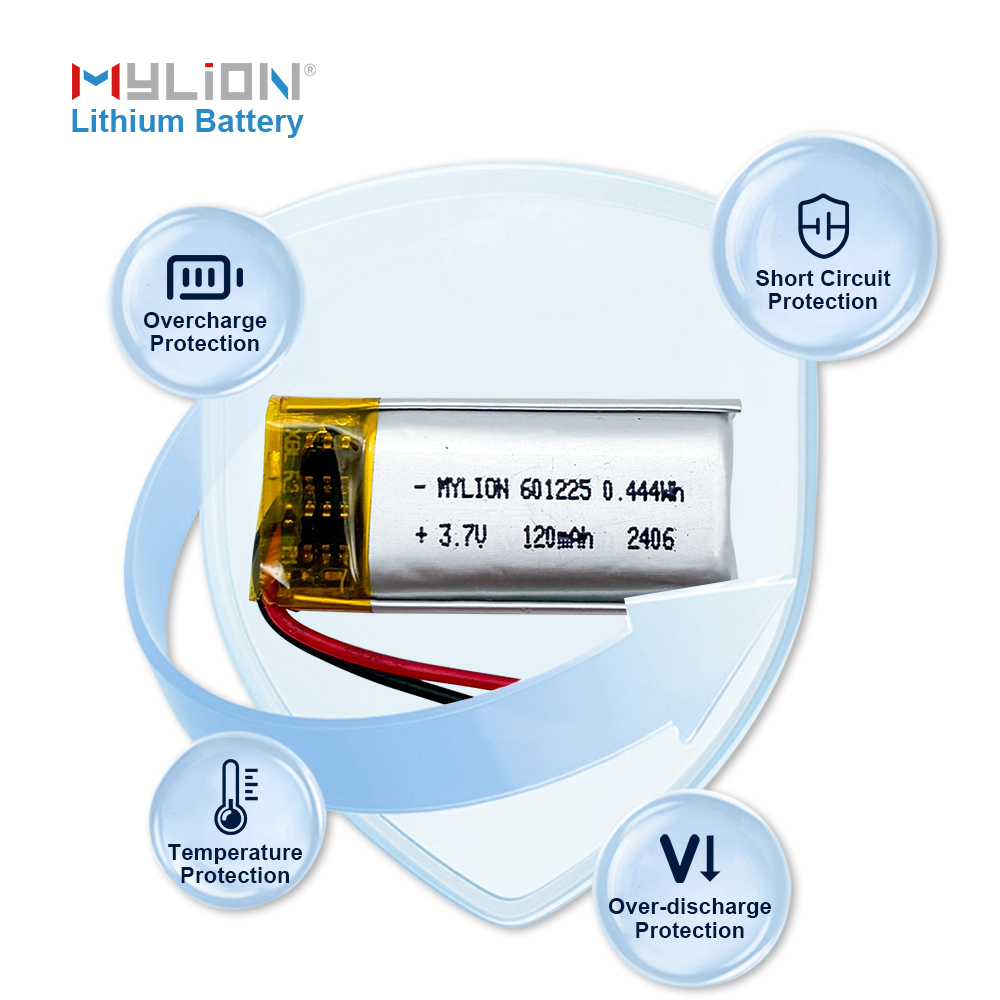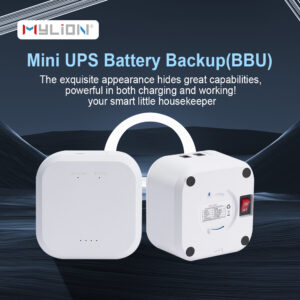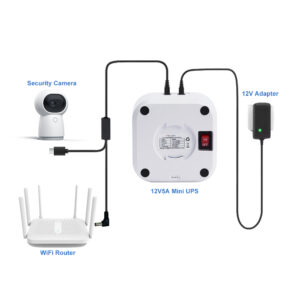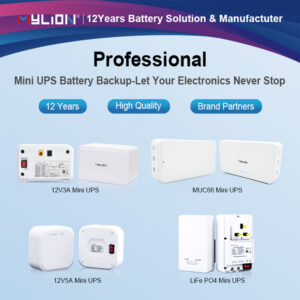When choosing the right battery for a particular application, one of the key factors to consider is the battery’s lifespan. A longer lifespan means less frequent replacements, lower costs, and less environmental impact over time. LiPo batteries (lithium polymer batteries) are increasingly becoming a choice for everything from drones to electronics and even medical devices due to their lightweight design and high energy density. In this article, we compare LiPo batteries to traditional battery chemistries such as nickel metal hydride (NiMH) and lead-acid batteries, focusing on aspects such as lifespan, charge cycles, maintenance, and disposal.

1.Lifespan and Charge Cycles
LiPo Batteries: High Performance, Long Life
One of the main advantages of lithium polymer batteries is their long lifespan. LiPo batteries typically last between 300 and 500 charge cycles, depending on factors such as usage, temperature, and charging practices. In terms of lifespan, each cycle refers to the process of charging the battery from 0% to 100% and then discharging it back to 0%. However, it is worth noting that lithium polymer batteries only lose a small portion of their total capacity in each cycle, which means that they remain effective for quite a few cycles. For high-performance devices such as drones and remote-controlled vehicles, lithium polymer batteries can last for years before needing replacement as long as they are properly maintained.
In contrast, NiMH batteries typically provide about 500 to 1000 charge cycles, but due to their lower energy density and slower discharge rate, they have a shorter lifespan compared to lithium polymer batteries. However, NiMH batteries are less sensitive to overcharging than lithium polymer batteries, which is an advantage in certain specific applications. On the other hand, lead-acid batteries are known for their long lifespan, which often exceeds 1000 charge cycles. However, these batteries tend to have lower energy density and are larger and heavier than LiPo batteries, making them less suitable for applications where space and weight are critical.
Charge Retention and Efficiency
LiPo batteries have superior charge retention and efficiency, meaning they can more effectively hold a charge for longer periods of time without noticeable power loss. When fully charged, LiPo batteries retain about 90% of their charge after a month, making them ideal for devices that require long-term energy storage. In contrast, NiMH batteries lose their charge faster and generally have a higher self-discharge rate, meaning they need to be charged more frequently, especially in long-term storage.
Lead-acid batteries also have a relatively high self-discharge rate, and despite their longer cycle life, they require more maintenance to ensure they maintain their efficiency over the long term. Regular inspections, fluid topping-off, and more complex charging methods make lead-acid batteries less user-friendly than LiPo batteries, which have a simpler charging and maintenance process.

2.Maintenance Cost and Convenience
Lithium Polymer Batteries: Low Maintenance Cost, High Efficiency
One of the main selling points of lithium polymer batteries is their low maintenance requirements. Once properly charged, these batteries generally do not require any additional maintenance, other than carefully monitoring their charge level. Users must avoid overcharging or discharging the battery to very low levels, as this can significantly shorten the battery’s lifespan. Using a quality charger to charge lithium polymer batteries and avoiding extreme temperatures can also prevent damage and extend their lifespan.
Compared to traditional batteries, lithium polymer batteries are simpler to use, which reduces maintenance costs. Their charging process is fast and relatively easy to manage, and many modern devices incorporate smart charging systems to prevent overcharging. In addition, because lithium polymer batteries are lighter and more compact than other types of batteries, they do not require additional protective housings or extensive cooling systems, which reduces overall maintenance costs.
NiMH and Lead-Acid Batteries: Higher Maintenance Needs
In contrast, NiMH batteries require more attention, especially in applications involving high discharge rates. NiMH batteries are more susceptible to memory effects, which means that their capacity may decrease over time if they are not fully discharged before recharging. Periodic deep discharges and proper cycling are necessary to ensure maximum capacity is maintained, but this can be a hassle for users.
Lead-acid batteries are the most maintenance-intensive of the traditional battery types. These batteries are often used in large applications such as backup power systems, electric vehicles, and industrial equipment. They require regular fluid checks as electrolyte levels can drop, and they need to be properly charged and maintained to prevent sulfation (a process that reduces charging capacity). This extra maintenance makes lead-acid batteries less convenient and more costly in the long run.
3.Environmental Impact and Disposal
Lithium Polymer Batteries: Environmental Issues and Recycling
Lithium polymer batteries are often viewed as an environmentally friendly alternative to traditional batteries, especially because they do not contain toxic materials such as cadmium or lead that are common in NiMH and lead-acid batteries. However, lithium polymer batteries still pose a risk to the environment because lithium is a material that requires special disposal methods.
Recycling lithium polymer batteries is more complicated than other battery types because lithium extraction and recovery involve specialized processes. However, the impact of lithium polymer battery waste may decrease over time as more recycling facilities are developed. The growing emphasis on green technology and the push for sustainable materials in battery production should also drive innovation in recycling technology.
NiMH and Lead-Acid Batteries: Recycling and Environmental Footprint
NiMH batteries are generally more environmentally friendly than lead-acid batteries because they contain fewer toxic elements. They can be recycled, but the recycling process is still less efficient and cost-effective than that of lithium polymer batteries. Like lithium polymer batteries, the disposal of NiMH batteries must be done through specialized recycling programs to prevent harm to the environment.
Lead-acid batteries, despite their long lifespan, have the greatest environmental impact because they contain toxic lead and require specific recycling methods. Lead is a hazardous substance that can lead to soil and water contamination if not properly handled. Fortunately, lead-acid batteries are widely recycled (with a recycling rate of more than 95%), but the environmental risks are still significant if not handled properly.

Conclusion: The Future of Battery Technology
In summary, Lipo batteries offer longer life, lower maintenance requirements, and higher efficiency than traditional battery types such as NiMH and lead-acid batteries. While Li-polymer batteries require careful handling and attention to avoid overcharging and overheating, they outperform traditional batteries in terms of energy density, cycle life, and overall convenience. On the other hand, NiMH and lead-acid batteries still have a place in certain applications, especially in large energy storage systems or where cost is a major consideration.
As battery technology continues to advance, Li-polymer batteries are likely to become even more efficient, safe, and environmentally friendly. For consumers and industries seeking reliable, high-performance, and low-maintenance battery solutions, Li-polymer batteries are undoubtedly a good choice, offering a balance of performance, life, and environmental sustainability.





